Magnificent Chinese blue white porcelain charger, Kangxi period, 1667
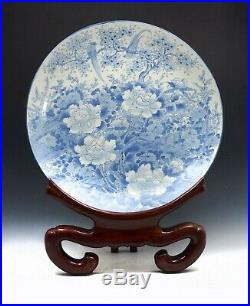
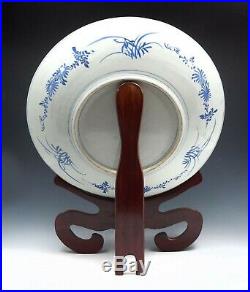

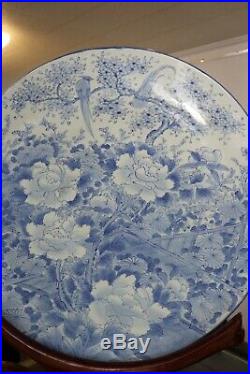
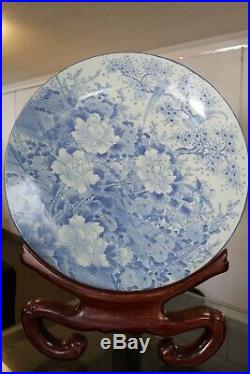
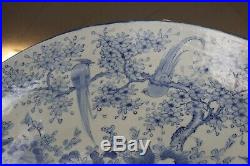
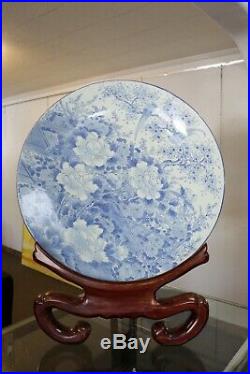
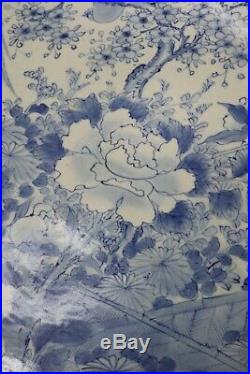

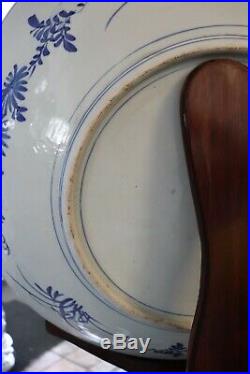
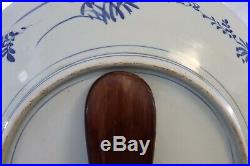
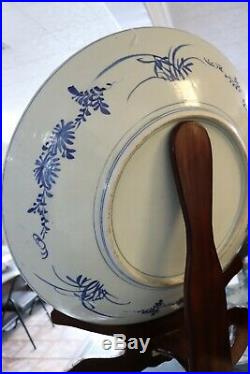

Magnificent Chinese blue white porcelain charger, Kangxi period, 1667? The charger contains a beautiful painting of several peonies, other flowers, many leaves and two tropical birds, sitting on a cherry tree, with a background of bamboo constructions.
Although there are no marks, we may attribute this charger to Kangxi period, because of 4 concentric blue lines on the back. The surface of the charger is wavy, proving handmade production. There are 7 stilt marks on the back in the center.Stilts can be used in a few ways: they can be used to allow vessels to have glaze on the interior and exterior (including the bottom), as well as to nest and stack them in the kiln. Stand is made of hard red wood, carved especially for this charger. Diameter of the charger: 24.25 inches = 56.5 cm. Height: 4 inches = 10 cm.
Height of the charger & stand: Approximately 30.5 inches = 76 cm. Condition: almost perfect, no chips, no cracks, just a small area (1 x 2 cm) of uneven glaze on the front surface.
Provenance: from estate collection in Florida, USA. A special carved wooden box with memory foam is advised. When were reign marks first used?You would not expect to find reign marks on pieces from earlier dynasties. The most common marks on porcelain tend to be written in underglaze blue within a double circle. There was a brief time during the Kangxi period in 1667 when the emperor issued an edict forbidding the use of his reign mark on porcelain in case the ceramics were smashed and discarded.
This resulted in many porcelain marks simply comprising empty underglaze blue double circles, or the use of auspicious symbols in underglaze blue such as an artemesia leaf, a. Mushroom or the head of a. The item "Magnificent Chinese blue white porcelain charger, Kangxi period, 1667" is in sale since Tuesday, March 26, 2019. This item is in the category "Antiques\Asian Antiques\China\Plates". The seller is "ukr10" and is located in Clearwater Beach, Florida. This item can be shipped worldwide.- Region of Origin: China
- Age: Pre-1800
- Primary Material: Porcelain & Pottery
- Original/Reproduction: Antique Original
